Could these beautiful islands help stop killer diseases?
- Published
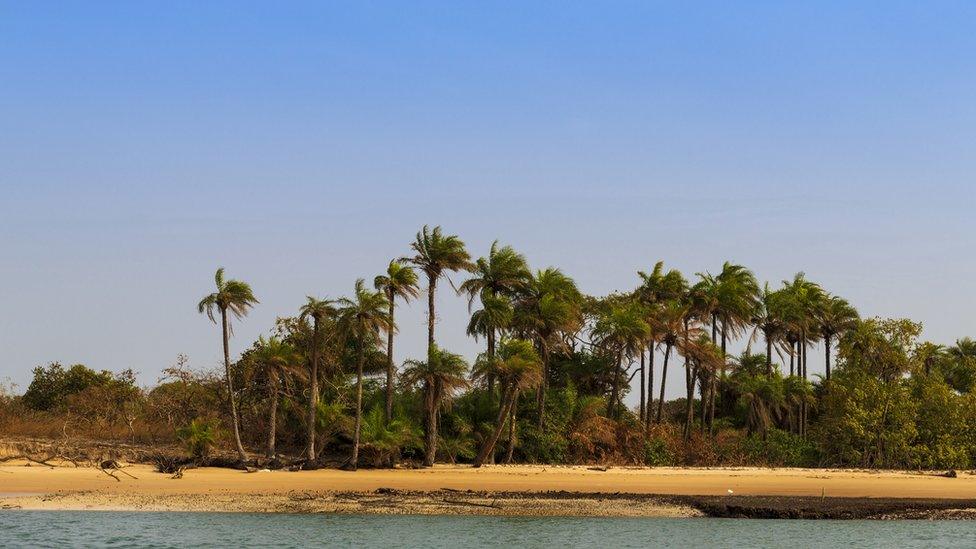
Travellers to the remote African islands of Bijagos can expect to find a tropical paradise of pristine beaches and lush rainforest.
But the islands are not just beautiful. They are also a natural laboratory, providing a unique setting in which to study cures for some of the world's deadliest diseases.
A collection of 18 islands and 70 islets off the coast of Guinea-Bissau, West Africa, the Bijagos are home to about 30,000 people with their own language and unique traditions.
They also teem with wildlife, including the rare saltwater hippopotamus and giant sea turtle, which thrive in this remote spot.

But these tranquil islands are home to many serious illnesses and conditions. Life expectancy on Guinea-Bissau is about 60, and on the Bijagos Islands it is thought to be much lower.
Malaria, a severe eye infection called trachoma, lymphatic filariasis - a chronic swelling sometimes known as elephantiasis - and intestinal worms are particular problems.
However, the islands may also hold the secret to tackling the very diseases that blight them.

A natural laboratory
Medical researchers have been working on the Bijagos Islands for several years to see if they can get rid of certain diseases from certain islands.
The reason that the islands work so well as a natural laboratory is their remoteness.
While this makes some everyday activities difficult, it is a helpful feature when trying to eradicate disease.
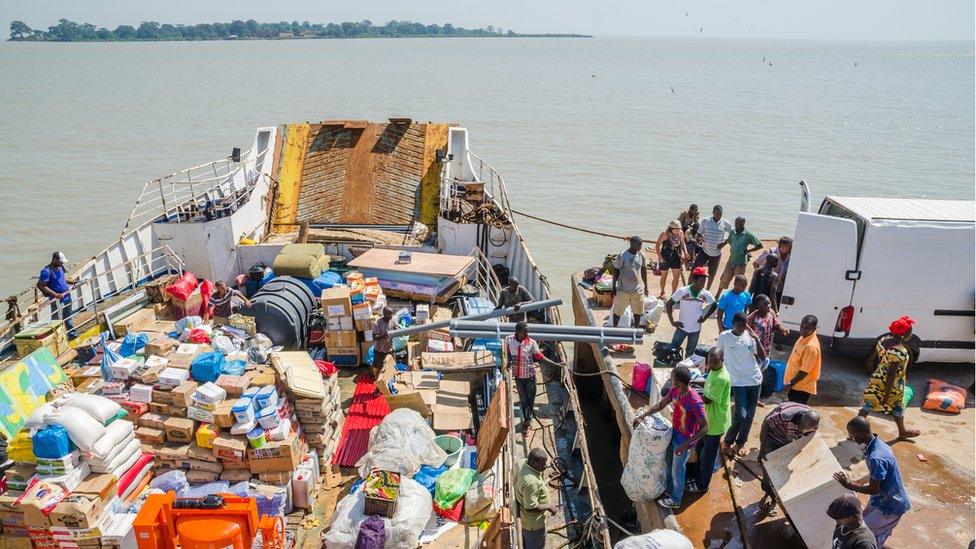
A boat in Bissau harbour preparing to make the journey to the Bijagos
The islands' separation by water creates a natural barrier. This allows us to compare different disease control methods, without the risk of cross-contamination between the test sites.
On the mainland, people can readily move in and out of trial areas, contaminating the sites and making it difficult to establish cause and effect.
An island set-up allows us to carefully and accurately measure the impact of any intervention made.
While there are many archipelagos around the world, few have islands close enough together to allow us to work there, but far enough apart to minimise interference during experiments.
There are also few islands with this layout that are home to so many diseases.
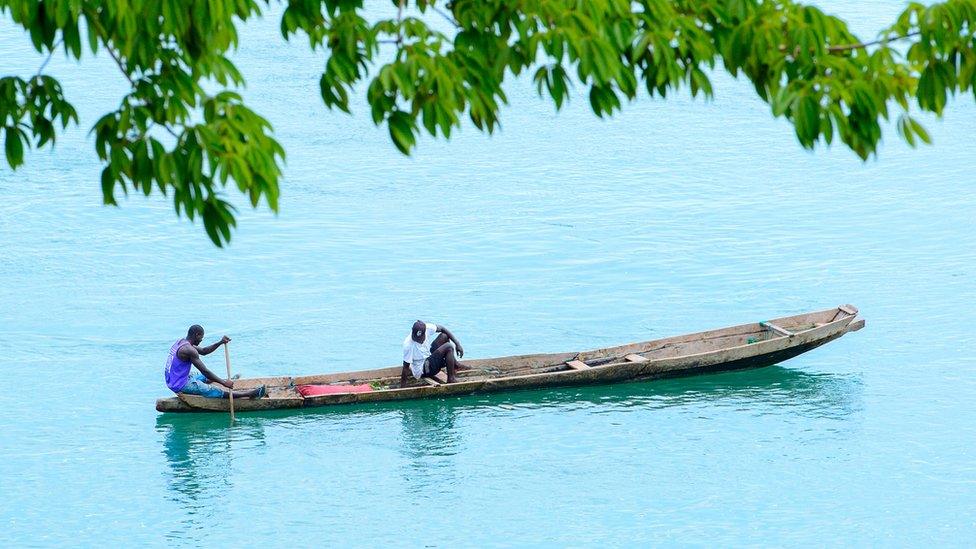
Trachoma
Researchers from the London School of Hygiene and Tropical Medicine (LSHTM) initially focused on trachoma, external, an infectious disease that turns the eyelashes inwards. Affecting 1.9 million people globally, it is the world's leading cause of preventable blindness.
Trachoma can be transmitted if contaminated hands, clothing or infected flies come into contact with the eyes. It is caused by a form of chlamydia bacterium and often spreads in crowded areas with inadequate sanitation.
The disease is found in 42 countries around the world, and at one point, there were some villages on the islands where every single child had the disease.
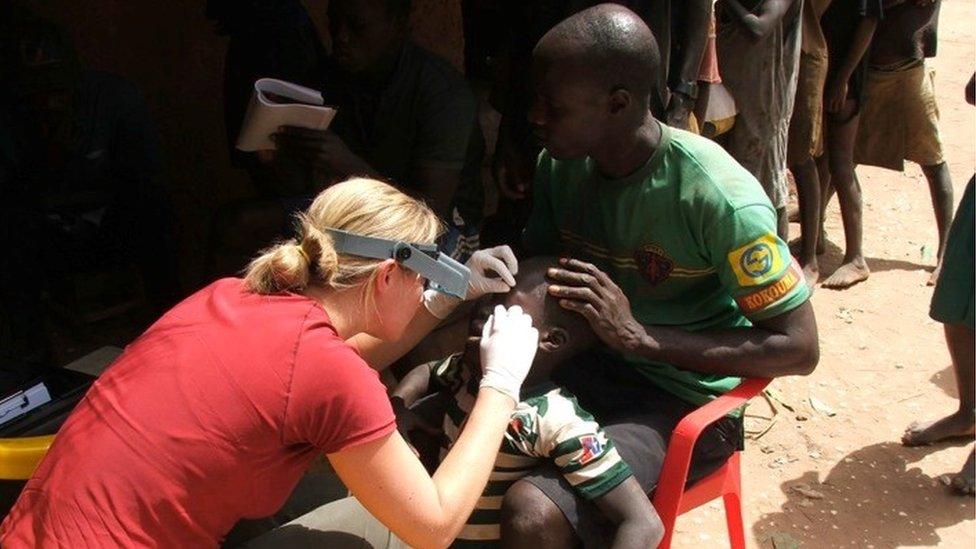
Dr Anna Last examining a patient for trachoma
Dr Anna Last from LSHTM identified high risk areas for trachoma, external, before treating entire communities with antibiotics to end the cycle of transmission.
Inner eyelid swabs, taken before and after the treatment, helped the researchers to detect the disease at an early stage. They are also being used to identify which genetic types of infection were present.
This might improve understanding of what happens after local elimination.
If the trachoma returns, we may be able to determine from its genetic strain whether it came from an outside source or re-emerged from within that community.
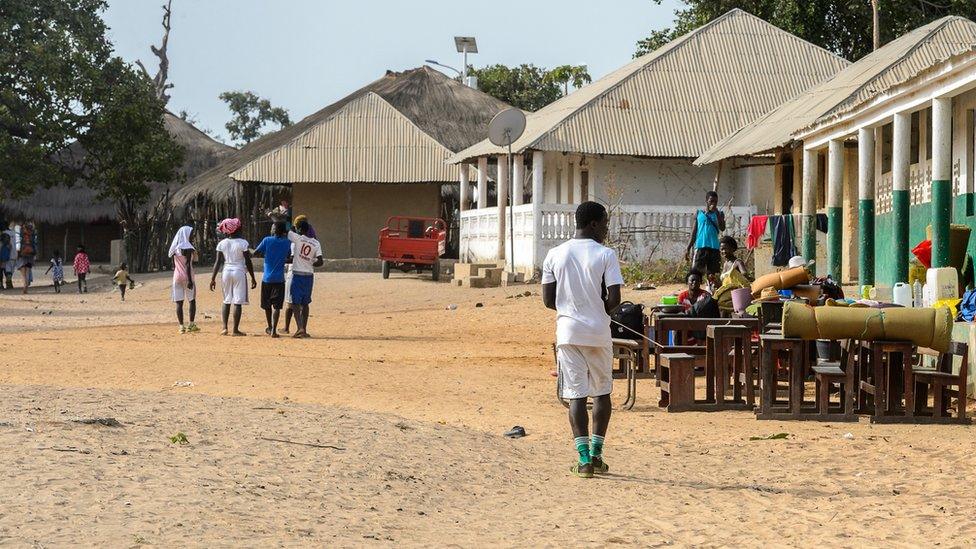
The results were striking. When she first began her work, 25% of people on the islands had the disease. Now, only 0.3% of people have it.
Not only is this below the WHO threshold for elimination, meaning the disease is all but eradicated from the islands, but the techniques developed could now benefit the wider world.

Getting to Bijagos
Occasionally attracts intrepid explorers, but not a typical holiday destination
Getting to the islands can be treacherous, particularly in the rainy season, when storms can come out of nowhere and cause large swells
The journey from the mainland takes at least five hours, on a small ferry packed with people and animals
There are few health centres, with the largest on the main island of Bubaque - medical supplies are limited
While medical professionals provide the best care they can, remoteness and inaccessibility at times make this difficult

Malaria
Trachoma is not the only problem facing the people of the Bijagos and several other diseases on the islands are now being tackled.
Our current focus is malaria, external. This disease is spread when female mosquitoes infected with a parasite bite a human, leading to initial symptoms such as fever and a headache before quickly becoming more severe. Malaria kills almost half a million people worldwide each year.
Given the prevalence of malaria on the islands - with up to one in four people infected - it is unsurprising we found mosquitoes that are very good at transmitting the disease.
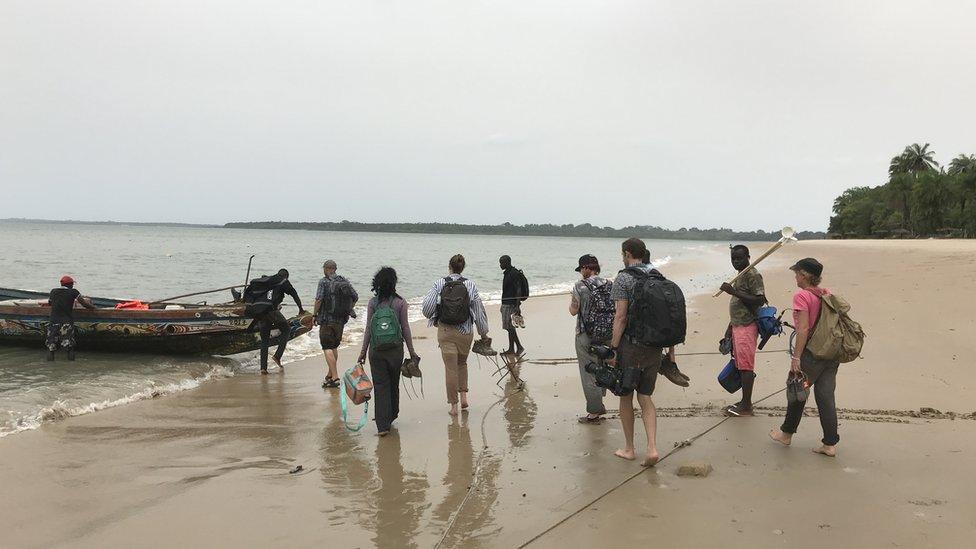
Researchers from LSHTM leaving Rubane island following a mosquito survey
Worryingly, we also found that some were resistant to insecticides.
This means the most common ways to control malaria - bed nets and spraying houses with insecticides - may not work, meaning an alternative strategy is needed.
A new drug is about to be trialled, which is transferred to the mosquito via the victim's bloodstream when it bites.
Past treatments have tended to target the malaria parasite within the human body. But this drug targets both the mosquito and the malaria parasite, shortening their lifespan.

Islander Ansulmani collecting mosquito larvae using the dipping method
In this trial, all the islands will be given the standard control tools, such as bed nets. Some, the "intervention" islands, will also be given the drug. Others, the "control" islands, will not.
A team of local islanders have been trained in medical skills, such as taking blood samples and screening them for malaria.
They have also learned how to collect and identify mosquitoes, with the help of Ba, one of our field team hoping to become the first entomologist, or insect specialist, on the islands.
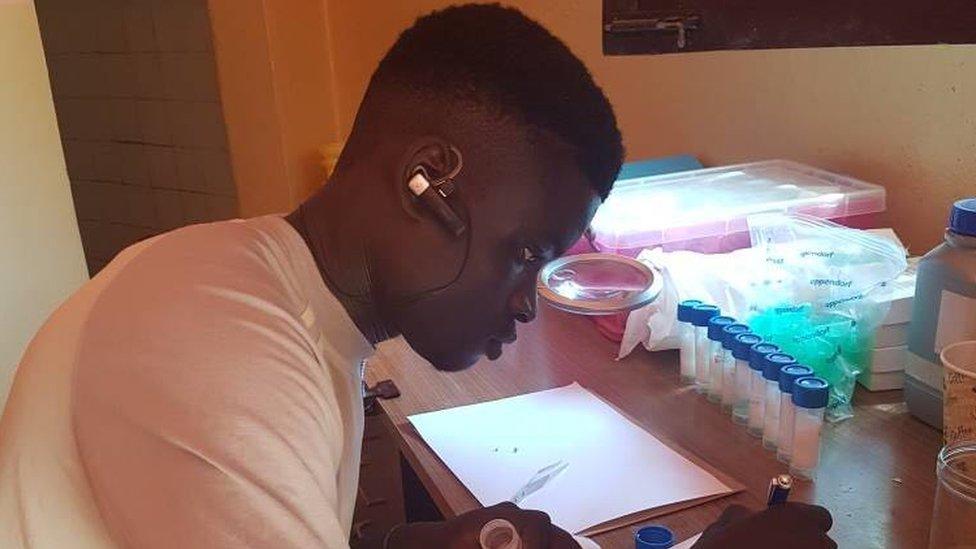
Ba is studying to be an entomologist
Looking to the future
Whether this drug will get rid of malaria on the islands once and for all remains to be seen.
Either way, the lessons learnt from our studies are likely to have an impact far beyond the remote Bijagos Islands.
Every study helps us to learn about the disease itself and how it is transmitted, which shapes future research.
On the islands, this can be done more quickly, with greater control and accuracy. We can see what the effects are in a defined area, reaching an entire population.
The LSHTM project will continue on the Bijagos for at least another five years, and in the meantime, its findings are likely to be used to tackle major diseases like malaria elsewhere.

About this piece
This analysis piece was commissioned by the BBC from an expert working for an outside organisation. The two-year study towards infectious disease elimination on the Bijagos Islands was funded by UK Research and Innovation, external.
Prof James Logan, external is head of the Department of Disease Control at the London School of Hygiene and Tropical Medicine. Follow him on Twitter at @ProfJamesLogan, external.

Edited by Eleanor Lawrie